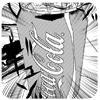Science, it definitely still works bitches.
-
Zap your brain into the zone: Fast track to pure focus[ul][li]06 February 2012 by Sally Adee[/li][li]Magazine issue 2850. Subscribe and save[/li][li]For similar stories, visit the The Human Brain Topic Guide[/li][/ul]
Whether you want to smash a forehand like Federer, or just be an Xbox hero, there is a shocking short cut to getting the brain of an expert
I'm close to tears behind my thin cover of sandbags as 20 screaming, masked men run towards me at full speed, strapped into suicide bomb vests and clutching rifles. For every one I manage to shoot dead, three new assailants pop up from nowhere. I'm clearly not shooting fast enough, and panic and incompetence are making me continually jam my rifle.
My salvation lies in the fact that my attackers are only a video, projected on screens to the front and sides. It's the very simulation that trains US troops to take their first steps with a rifle, and everything about it has been engineered to feel like an overpowering assault. But I am failing miserably. In fact, I'm so demoralised that I'm tempted to put down the rifle and leave.
Then they put the electrodes on me.
I am in a lab in Carlsbad, California, in pursuit of an elusive mental state known as "flow" - that feeling of effortless concentration that characterises outstanding performance in all kinds of skills.
Flow has been maddeningly difficult to pin down, let alone harness, but a wealth of new technologies could soon allow us all to conjure up this state. The plan is to provide a short cut to virtuosity, slashing the amount of time it takes to master a new skill - be it tennis, playing the piano or marksmanship.
That will be welcome news to anyone embarking on the tortuous road to expertise. According to pioneering research by Anders Ericsson at Florida State University in Tallahassee, it normally takes 10,000 hours of practice to become expert in any discipline. Over that time, your brain knits together a wealth of new circuits that eventually allow you to execute the skill automatically, without consciously considering each action. Think of the way tennis champion Roger Federer, after years of training, can gracefully combine a complicated series of actions - keeping one eye on the ball and the other on his opponent, while he lines up his shot and then despatches a crippling backhand - all in one stunningly choreographed second.
Flow typically accompanies these actions. It involves a Zen-like feeling of intense concentration, with time seeming to stop as you focus completely on the activity in hand. The experience crops up repeatedly when experts describe what it feels like to be at the top of their game, and with years of practice it becomes second nature to enter that state. Yet you don't have to be a pro to experience it - some people report the same ability to focus at a far earlier stage in their training, suggesting they are more naturally predisposed to the flow state than others. This effortless concentration should speed up progress, while the joyful feelings that come with the flow state should help take the sting out of further practice, setting such people up for future success, says Mihaly Csikszentmihalyi at Claremont Graduate University in California. Conversely, his research into the flow state in children showed that, as he puts it, "young people who didn't enjoy the pursuit of the subject they were gifted in, whether it was mathematics or music, stopped developing their skills and reverted to mediocrity."
Despite its potentially crucial role in the development of talent, many researchers had deemed the flow state too slippery a concept to tackle - tainted as it was with mystical, meditative connotations. In the late 1970s, Csikszentmihalyi, then a psychologist at the University of Chicago, helped change that view by showing that the state could be defined and studied empirically. In one groundbreaking study, he interviewed a few hundred talented people, including athletes, artists, chess players, rock climbers and surgeons, enabling him to pin down four key features that characterise flow.
The first is an intense and focused absorption that makes you lose all sense of time. The second is what is known as autotelicity, the sense that the activity you are engaged in is rewarding for its own sake. The third is finding the "sweet spot", a feeling that your skills are perfectly matched to the task at hand, leaving you neither frustrated nor bored. And finally, flow is characterised by automaticity, the sense that "the piano is playing itself", for example.
Exactly what happens in the brain during flow has been of particular interest, but it has been tricky to measure. Csikszentmihalyi took an early stab at it, using electroencephalography (EEG) to measure the brain waves of expert chess players during a game. He found that the most skilled players showed less activity in the prefrontal cortex, which is typically associated with higher cognitive processes such as working memory and verbalisation. That may seem counter-intuitive, but silencing self-critical thoughts might allow more automatic processes to take hold, which would in turn produce that effortless feeling of flow.
Later studies have confirmed these findings and revealed other neural signatures of flow. Chris Berka and her colleagues at Advanced Brain Monitoring in Carlsbad, California, for example, looked at the brain waves of Olympic archers and professional golfers. A few seconds before the archers fired off an arrow or the golfers hit the ball, the team spotted a small increase in what's known as the alpha band, one of the frequencies that arises from the electrical noise of all the brain's neurons (The International Journal of Sport and Society, vol 1, p 87). This surge in alpha waves, Berka says, is associated with reduced activation of the cortex, and is always more obvious in experts than in novices. "We think this represents focused attention on the target, while other sensory inputs are suppressed," says Berka. She found that these mental changes are accompanied by slower breathing and a lower pulse rate - as you might expect from relaxed concentration.
Defining and characterising the flow state is all very well, but could a novice learn to turn off their critical faculties and focus their attention in this way, at will? If so, would it boost performance? Gabriele Wulf, a kinesiologist at the University of Nevada at Las Vegas, helped to answer this question in 1998, when she and her colleagues examined the way certain athletes move (Journal of Motor Behavior, vol 30, p 169).
At the time, she had no particular interest in the flow state. But Wulf and her colleagues found that they could quickly improve a person's abilities by asking them to focus their attention on an external point away from their body. Aspiring skiers who were asked to do slalom-type movements on a simulator, for example, learned faster if they focused on a marked spot ahead of them. Golfers who focused on the swing of the club were about 20 per cent more accurate than those who focused on their own arms.
Wulf and her colleagues later found that an expert's physical actions require fewer muscle movements than those of a beginner - as seen in the tight, spare motions of top-flight athletes. They also experience less mental strain, a lower heart rate and shallower breathing - all characteristics of the flow state (Human Movement Science, vol 29, p 440).
These findings were borne out in later studies of expert and novice swimmers. Novices who concentrated on an external focus - the water's movement around their limbs - showed the same effortless grace as those with more experience, swimming faster and with a more efficient technique. Conversely, when the expert swimmers focused on their limbs, their performance declined (International Journal of Sport Science & Coaching, vol 6, p 99).
Wulf's findings fit well with the idea that flow - and better learning - comes when you turn off conscious thought. "When you have an external focus, you achieve a more automatic type of control," she says. "You don't think about what you are doing, you just focus on the outcome."
Berka has been taking a different approach to evoke the flow state - her group is training novice marksmen to use neurofeedback. Each person is hooked up to electrodes that tease out and display specific brain waves, along with a monitor that measures their heartbeat. By controlling their breathing and learning to deliberately manipulate the waveforms on the screen in front of them, the novices managed to produce the alpha waves characteristic of the flow state. This, in turn, helped them improve their accuracy at hitting the targets. In fact, the time it took to shoot like a pro fell by more than half (The International Journal of Sport and Society, vol 1, p 87).
But as I found when I tried the method, even neurofeedback has a catch. It takes time and effort to produce really thrumming alpha waves. Just when I thought I had achieved them, they evaporated and I lost my concentration. Might there be a faster way to force my brain into flow? The good news is that there, too, the answer appears to be yes.
That is why I'm now allowing Michael Weisend, who works at the Mind Research Network in Albuquerque, New Mexico, to hook my brain up to what's essentially a 9-volt battery. He sticks the anode - the positive pole of the battery - to my temple, and the cathode to my left arm. "You're going to feel a slight tingle," he says, and warns me that if I remove an electrode and break the connection, the voltage passing through my brain will blind me for a good few seconds.
Weisend, who is working on a US Defense Advanced Research Projects Agency programme to accelerate learning, has been using this form of transcranial direct current stimulation (tDCS) to cut the time it takes to train snipers. From the electrodes, a 2-milliamp current will run through the part of my brain associated with object recognition - an important skill when visually combing a scene for assailants.
The mild electrical shock is meant to depolarise the neuronal membranes in the region, making the cells more excitable and responsive to inputs. Like many other neuroscientists working with tDCS, Weisend thinks this accelerates formation of new neural pathways during the time that someone practises a skill. The method he is using on me boosted the speed with which wannabe snipers could detect a threat by a factor of 2.3 (Experimental Brain Research, vol 213, p 9).
Mysteriously, however, these long-term changes also seem to be preceded by a feeling that emerges as soon as the current is switched on and is markedly similar to the flow state. "The number one thing I hear people say after tDCS is that time passed unduly fast," says Weisend. Their movements also seem to become more automatic; they report calm, focused concentration - and their performance improves immediately.
It's not yet clear why some forms of tDCS should bring about the flow state. After all, if tDCS were solely about writing new memories, it would be hard to explain the improvement that manifests itself as soon as the current begins to flow.
One possibility is that the electrodes somehow reduce activity in the prefrontal cortex - the area used in critical thought, which Csikszentmihalyi had found to be muted during flow. Roy Hamilton, a neuroscientist at the University of Pennsylvania in Philadelphia, thinks this may happen as a side effect of some forms of tDCS. "tDCS might have much more broad effects than we think it does," he says. He points out that some neurons can mute the signals of other brain cells in their network, so it is possible that stimulating one area of the brain might reduce activity in another.
Uncertain effectOthers are more sceptical. Arne Dietrich of the American University of Beirut, Lebanon, suspects that learning will be impaired if the frontal cortex isn't initially engaged in the task. What's more, he thinks you would need a specialised type of tDCS to dampen activity in the prefrontal cortex. "But then again, it is not clear what sort of ripple effect tDCS has globally," he concedes, "regardless of which brain area is targeted."
In any case, it is clear that not all forms of tDCS bring about flow. Roi Cohen Kadosh at the University of Oxford certainly saw no signs of it when he placed an anode over the brain regions used in spatial reasoning.
This debate will only be resolved with much more research. For now, I'm intrigued about what I'll experience as I ask Weisend to turn on the current. Initially, there is a slight tingle, and suddenly my mouth tastes like I've just licked the inside of an aluminium can. I don't notice any other effect. I simply begin to take out attacker after attacker. As twenty of them run at me brandishing their guns, I calmly line up my rifle, take a moment to breathe deeply, and pick off the closest one, before tranquilly assessing my next target.
In what seems like next to no time, I hear a voice call out, "Okay, that's it." The lights come up in the simulation room and one of the assistants at Advanced Brain Monitoring, a young woman just out of university, tentatively enters the darkened room.
In the sudden quiet amid the bodies around me, I was really expecting more assailants, and I'm a bit disappointed when the team begins to remove my electrodes. I look up and wonder if someone wound the clocks forward. Inexplicably, 20 minutes have just passed. "How many did I get?" I ask the assistant.
She looks at me quizzically. "All of them."
Diy brain enhancementZapping your brain with a small current seems to improve everything from mathematical skills to marksmanship, but for now your best chance of experiencing this boost is to sign up for a lab experiment. Machines that provide transcranial direct current stimulation (tDCS) cost £5000 a pop, and their makers often sell them only to researchers.
That hasn't stopped a vibrant community of DIY tDCS enthusiasts from springing up. Their online forums are full of accounts of theirhome-made experiments, including hair-curling descriptions of blunders that, in one case, left someone temporarily blind.
What drives people to take such risks? Roy Hamilton, a neuroscientist at the University of Pennsylvania in Philadelphia, thinks it is part of a general trend he calls cosmetic neuroscience, in which people try to tailor their brains to the demands of an increasingly fast-paced world. "In a society where both students and their professors take stimulant medications to meet their academic expectations," he warns, "the potential pressure for the use of cognitive enhancing technologies of all types is very real".
Sally Adee is a technology feature editor at New ScientistLive= sgt pantyfire PSN= pantyfire -
Sorry about the formatting and the size but I couldn't be arsed with all the fiddling around to make them prettier.
Anyway those are some that I have found interesting over the past few weeks, I will post more if people are finding them worthwhile.Live= sgt pantyfire PSN= pantyfire -
I'll be honest panty, I scrolled past due to the formattingI'm falling apart to songs about hips and hearts...
-
Not being shitty here mate, but hey, your loss.
The worst bit is the title, the rest is in paragraphs and therefore not hard to read, enlarge the text via your browsers zoom function if the size is an issue.
The last one in particular is very good.Live= sgt pantyfire PSN= pantyfire -
If you like that flow/practise/10,000 hours stuff you should read this:Â http://www.amazon.co.uk/Bounce-Myth-Talent-Power-Practice/dp/0007350546/ref=sr_1_1?ie=UTF8&qid=1336746785&sr=8-1
Very well written, very interesting. -
I was put off reading his book by a number of scathing reviews which suggest that it's just a mish-mash of various pop psychology clichés and lacks the original research and academic rigour which might give credence to his argument.
I've been studying 'flow' a little myself lately (in the wider context of Alexander technique) and it's certainly an interesting subject, though I've found it quite easy to achieve a 'flow' state by a fairly simple process which relies entirely on the self-awareness and natural co-ordination that is central to Alexander's methods. It's really not that elusive and certainly doesn't require the rather drastic measure of firing electrical pulses into your brain, though that may certainly yield interesting results in terms of furthering our understanding of how the brain works. -
Circles are funny things. Imagine the Earth was a perfect sphere, and you had a bit of string that was exactly long enough to go around it, ie was the exact length of its equator. Now, how much longer would that 25,000 mile bit of circular string have to be, in order to have a clear meter length gap all the way round between the string and the Earth?Â
It's actually bleeding obvious, because a child could tell you C = Pi * D, so it's just an extra 2m*3.141, which is just 6.28 meters. That's a shitload of extra area for a small increase in circumference.Â
Maybe it's just me, but I find that odd. -
On reflection, it probably is just me. I can be very stupid sometimes.
-
Yeah it's the whole pizza thing.
The % increase in area (which would be the same as the volume) for let's say a 12 inch to 15 inch is about 55% for a 25% increase in radius. Brilliant!PSN: Shinji-_-Ikari
Twitter: @YouDidItAll4Me -
It was more the circumference thing that was bothering me, but it certainly came about by eating pizza. And smoking weed. And drinking whisky.
Edit: For 6.28 meters in length you get an extra area of 6.47 * 10 to the ten square meters. That's 647 with an extra 98 zeros after it.Â
Edit: An extra eight zeros. Not 98. Fucking whisky. It's still a lot. -
It's, like, already a really long bit of string, dude.
-
pantyfire wrote:Not being shitty here mate, but hey, your loss. The worst bit is the title, the rest is in paragraphs and therefore not hard to read, enlarge the text via your browsers zoom function if the size is an issue. The last one in particular is very good.
Very interesting read @pantyfireÂ
I remember being in the zone when playing Chuckie Egg when I was younger, to the point where I was playing for about 2.5 hours solid.
I think there is so much we haven't explored of the brain and I find studies like this intriguing. Again its unfortunate that it stems from the ability to make people better killers.Sometimes here. Sometimes Lurk. Occasionally writes a bad opinion then deletes it before posting.. -
Zap your brain into the zone: Fast track to pure focus
06 February 2012 by Sally Adee
Magazine issue 2850.Â
Whether you want to smash a forehand like Federer, or just be an Xbox hero, there is a shocking short cut to getting the brain of an expert
I'm close to tears behind my thin cover of sandbags as 20 screaming, masked men run towards me at full speed, strapped into suicide bomb vests and clutching rifles. For every one I manage to shoot dead, three new assailants pop up from nowhere. I'm clearly not shooting fast enough, and panic and incompetence are making me continually jam my rifle.
My salvation lies in the fact that my attackers are only a video, projected on screens to the front and sides. It's the very simulation that trains US troops to take their first steps with a rifle, and everything about it has been engineered to feel like an overpowering assault. But I am failing miserably. In fact, I'm so demoralised that I'm tempted to put down the rifle and leave.
Then they put the electrodes on me.
I am in a lab in Carlsbad, California, in pursuit of an elusive mental state known as "flow" - that feeling of effortless concentration that characterises outstanding performance in all kinds of skills.
Flow has been maddeningly difficult to pin down, let alone harness, but a wealth of new technologies could soon allow us all to conjure up this state. The plan is to provide a short cut to virtuosity, slashing the amount of time it takes to master a new skill - be it tennis, playing the piano or marksmanship.
That will be welcome news to anyone embarking on the tortuous road to expertise. According to pioneering research by Anders Ericsson at Florida State University in Tallahassee, it normally takes 10,000 hours of practice to become expert in any discipline. Over that time, your brain knits together a wealth of new circuits that eventually allow you to execute the skill automatically, without consciously considering each action. Think of the way tennis champion Roger Federer, after years of training, can gracefully combine a complicated series of actions - keeping one eye on the ball and the other on his opponent, while he lines up his shot and then despatches a crippling backhand - all in one stunningly choreographed second.
Flow typically accompanies these actions. It involves a Zen-like feeling of intense concentration, with time seeming to stop as you focus completely on the activity in hand. The experience crops up repeatedly when experts describe what it feels like to be at the top of their game, and with years of practice it becomes second nature to enter that state. Yet you don't have to be a pro to experience it - some people report the same ability to focus at a far earlier stage in their training, suggesting they are more naturally predisposed to the flow state than others. This effortless concentration should speed up progress, while the joyful feelings that come with the flow state should help take the sting out of further practice, setting such people up for future success, says Mihaly Csikszentmihalyi at Claremont Graduate University in California. Conversely, his research into the flow state in children showed that, as he puts it, "young people who didn't enjoy the pursuit of the subject they were gifted in, whether it was mathematics or music, stopped developing their skills and reverted to mediocrity."
Despite its potentially crucial role in the development of talent, many researchers had deemed the flow state too slippery a concept to tackle - tainted as it was with mystical, meditative connotations. In the late 1970s, Csikszentmihalyi, then a psychologist at the University of Chicago, helped change that view by showing that the state could be defined and studied empirically. In one groundbreaking study, he interviewed a few hundred talented people, including athletes, artists, chess players, rock climbers and surgeons, enabling him to pin down four key features that characterise flow.
The first is an intense and focused absorption that makes you lose all sense of time. The second is what is known as autotelicity, the sense that the activity you are engaged in is rewarding for its own sake. The third is finding the "sweet spot", a feeling that your skills are perfectly matched to the task at hand, leaving you neither frustrated nor bored. And finally, flow is characterised by automaticity, the sense that "the piano is playing itself", for example.
Exactly what happens in the brain during flow has been of particular interest, but it has been tricky to measure. Csikszentmihalyi took an early stab at it, using electroencephalography (EEG) to measure the brain waves of expert chess players during a game. He found that the most skilled players showed less activity in the prefrontal cortex, which is typically associated with higher cognitive processes such as working memory and verbalisation. That may seem counter-intuitive, but silencing self-critical thoughts might allow more automatic processes to take hold, which would in turn produce that effortless feeling of flow.
Later studies have confirmed these findings and revealed other neural signatures of flow. Chris Berka and her colleagues at Advanced Brain Monitoring in Carlsbad, California, for example, looked at the brain waves of Olympic archers and professional golfers. A few seconds before the archers fired off an arrow or the golfers hit the ball, the team spotted a small increase in what's known as the alpha band, one of the frequencies that arises from the electrical noise of all the brain's neurons (The International Journal of Sport and Society, vol 1, p 87). This surge in alpha waves, Berka says, is associated with reduced activation of the cortex, and is always more obvious in experts than in novices. "We think this represents focused attention on the target, while other sensory inputs are suppressed," says Berka. She found that these mental changes are accompanied by slower breathing and a lower pulse rate - as you might expect from relaxed concentration.
Defining and characterising the flow state is all very well, but could a novice learn to turn off their critical faculties and focus their attention in this way, at will? If so, would it boost performance? Gabriele Wulf, a kinesiologist at the University of Nevada at Las Vegas, helped to answer this question in 1998, when she and her colleagues examined the way certain athletes move (Journal of Motor Behavior, vol 30, p 169).
At the time, she had no particular interest in the flow state. But Wulf and her colleagues found that they could quickly improve a person's abilities by asking them to focus their attention on an external point away from their body. Aspiring skiers who were asked to do slalom-type movements on a simulator, for example, learned faster if they focused on a marked spot ahead of them. Golfers who focused on the swing of the club were about 20 per cent more accurate than those who focused on their own arms.
Wulf and her colleagues later found that an expert's physical actions require fewer muscle movements than those of a beginner - as seen in the tight, spare motions of top-flight athletes. They also experience less mental strain, a lower heart rate and shallower breathing - all characteristics of the flow state (Human Movement Science, vol 29, p 440).
These findings were borne out in later studies of expert and novice swimmers. Novices who concentrated on an external focus - the water's movement around their limbs - showed the same effortless grace as those with more experience, swimming faster and with a more efficient technique. Conversely, when the expert swimmers focused on their limbs, their performance declined (International Journal of Sport Science & Coaching, vol 6, p 99).
Wulf's findings fit well with the idea that flow - and better learning -Â comes when you turn off conscious thought. "When you have an external focus, you achieve a more automatic type of control," she says. "You don't think about what you are doing, you just focus on the outcome."
Berka has been taking a different approach to evoke the flow state - her group is training novice marksmen to use neurofeedback. Each person is hooked up to electrodes that tease out and display specific brain waves, along with a monitor that measures their heartbeat. By controlling their breathing and learning to deliberately manipulate the waveforms on the screen in front of them, the novices managed to produce the alpha waves characteristic of the flow state. This, in turn, helped them improve their accuracy at hitting the targets. In fact, the time it took to shoot like a pro fell by more than half (The International Journal of Sport and Society, vol 1, p 87).
But as I found when I tried the method, even neurofeedback has a catch. It takes time and effort to produce really thrumming alpha waves. Just when I thought I had achieved them, they evaporated and I lost my concentration. Might there be a faster way to force my brain into flow? The good news is that there, too, the answer appears to be yes.
That is why I'm now allowing Michael Weisend, who works at the Mind Research Network in Albuquerque, New Mexico, to hook my brain up to what's essentially a 9-volt battery. He sticks the anode - the positive pole of the battery - to my temple, and the cathode to my left arm. "You're going to feel a slight tingle," he says, and warns me that if I remove an electrode and break the connection, the voltage passing through my brain will blind me for a good few seconds.
Weisend, who is working on a US Defense Advanced Research Projects Agency programme to accelerate learning, has been using this form of transcranial direct current stimulation (tDCS) to cut the time it takes to train snipers. From the electrodes, a 2-milliamp current will run through the part of my brain associated with object recognition - an important skill when visually combing a scene for assailants.
The mild electrical shock is meant to depolarise the neuronal membranes in the region, making the cells more excitable and responsive to inputs. Like many other neuroscientists working with tDCS, Weisend thinks this accelerates formation of new neural pathways during the time that someone practises a skill. The method he is using on me boosted the speed with which wannabe snipers could detect a threat by a factor of 2.3 (Experimental Brain Research, vol 213, p 9).
Mysteriously, however, these long-term changes also seem to be preceded by a feeling that emerges as soon as the current is switched on and is markedly similar to the flow state. "The number one thing I hear people say after tDCS is that time passed unduly fast," says Weisend. Their movements also seem to become more automatic; they report calm, focused concentration - and their performance improves immediately.
It's not yet clear why some forms of tDCS should bring about the flow state. After all, if tDCS were solely about writing new memories, it would be hard to explain the improvement that manifests itself as soon as the current begins to flow.
One possibility is that the electrodes somehow reduce activity in the prefrontal cortex - the area used in critical thought, which Csikszentmihalyi had found to be muted during flow. Roy Hamilton, a neuroscientist at the University of Pennsylvania in Philadelphia, thinks this may happen as a side effect of some forms of tDCS. "tDCS might have much more broad effects than we think it does," he says. He points out that some neurons can mute the signals of other brain cells in their network, so it is possible that stimulating one area of the brain might reduce activity in another.
Uncertain effectOthers are more sceptical. Arne Dietrich of the American University of Beirut, Lebanon, suspects that learning will be impaired if the frontal cortex isn't initially engaged in the task. What's more, he thinks you would need a specialised type of tDCS to dampen activity in the prefrontal cortex. "But then again, it is not clear what sort of ripple effect tDCS has globally," he concedes, "regardless of which brain area is targeted."
In any case, it is clear that not all forms of tDCS bring about flow. Roi Cohen Kadosh at the University of Oxford certainly saw no signs of it when he placed an anode over the brain regions used in spatial reasoning.
This debate will only be resolved with much more research. For now, I'm intrigued about what I'll experience as I ask Weisend to turn on the current. Initially, there is a slight tingle, and suddenly my mouth tastes like I've just licked the inside of an aluminium can. I don't notice any other effect. I simply begin to take out attacker after attacker. As twenty of them run at me brandishing their guns, I calmly line up my rifle, take a moment to breathe deeply, and pick off the closest one, before tranquilly assessing my next target.
In what seems like next to no time, I hear a voice call out, "Okay, that's it." The lights come up in the simulation room and one of the assistants at Advanced Brain Monitoring, a young woman just out of university, tentatively enters the darkened room.
In the sudden quiet amid the bodies around me, I was really expecting more assailants, and I'm a bit disappointed when the team begins to remove my electrodes. I look up and wonder if someone wound the clocks forward. Inexplicably, 20 minutes have just passed. "How many did I get?" I ask the assistant.
She looks at me quizzically. "All of them."
Diy brain enhancement
Zapping your brain with a small current seems to improve everything from mathematical skills to marksmanship, but for now your best chance of experiencing this boost is to sign up for a lab experiment. Machines that provide transcranial direct current stimulation (tDCS) cost £5000 a pop, and their makers often sell them only to researchers.
That hasn't stopped a vibrant community of DIY tDCS enthusiasts from springing up. Their online forums are full of accounts of theirhome-made experiments, including hair-curling descriptions of blunders that, in one case, left someone temporarily blind.
What drives people to take such risks? Roy Hamilton, a neuroscientist at the University of Pennsylvania in Philadelphia, thinks it is part of a general trend he calls cosmetic neuroscience, in which people try to tailor their brains to the demands of an increasingly fast-paced world. "In a society where both students and their professors take stimulant medications to meet their academic expectations," he warns, "the potential pressure for the use of cognitive enhancing technologies of all types is very real".
Sally Adee is a technology feature editor at New Scientist -
That's a properly formatted repeat of the article earlier posted by pantyfire. Interesting reading though.
-
This is nothing like the God thread lol..Sometimes here. Sometimes Lurk. Occasionally writes a bad opinion then deletes it before posting..
-
The God thread's a no-go zone for me - it's all a bit militant in there.
-
igorgetmeabrain wrote:The God thread's a no-go zone for me - it's all a bit militant in there.
I've been in there a couple of times. I have a scientific background so I'm interested in this as well as the laughs on the God thread.Sometimes here. Sometimes Lurk. Occasionally writes a bad opinion then deletes it before posting.. -
I post this on the God thread a couple of days ago..
I believe that humans expel energy. heat, electrical,from different areas of the electromagnetic spectrum.They follow the standard theories regarding moving in waves. That people have variations on the strength and wavelengths of energy they emit.that certain people function in a empathic way, while others work in an aggressive way, some in a passive way. That when some people interact, there is constructive interference, the energy levels increase, bounce off each other. Can go as far as changing someones mood. You will have met people that you get along with straight away, you click. You can't explain why.I would hypothesise that this can explain attraction between people.I would go as far as saying this can explain why there are people you meet that you just can't stand, but don't know why. Caused by destructive interference.if you get a group of people together, things get interesting, energy can increase massively in a crowd, almost euphoric feelings of positivity. I've experienced this in many concerts, and I sure i'm not alone.There are people out there that are described as charismatic, that can take over a room, a venue even.At the same time - there are 'hate' figures that almost create a negative energy around them.I'm going to guess that there will have been a lot of people at the Jubilee concert that thought it was absolutely amazing, came home buzzing and completely forgot about the cold.ÂThis isn't about auras, its more about the energy your average human type person expels.Whadya think?Sometimes here. Sometimes Lurk. Occasionally writes a bad opinion then deletes it before posting.. -
There's somewhere between the God thread and the Science thread where a theory like that belongs. The Psychic thread or summat.Â
You'd need some mechanism for how people generate and pick up on these waves.
I'd put internal cognitive processes being similar in response to shared external stimuli as a more realistic alternative to the shared energy in a room or venue that you talk about.
Likewise, the person who dominates a room is more likely to have a range of behaviours that people respond to in very similar ways. I don't think they're transmitting anything. -
Also there's a chemical explanation for stuff like attraction. And it has a well mapped mechanism for action.
-
monkey wrote:There's somewhere between the God thread and the Science thread where a theory like that belongs. The Psychic thread or summat. You'd need some mechanism for how people generate and pick up on these waves. I'd put internal cognitive processes being similar in response to shared external stimuli as a more realistic alternative to the shared energy in a room or venue that you talk about. Likewise, the person who dominates a room is more likely to have a range of behaviours that people respond to in very similar ways. I don't think they're transmitting anything.
I would say that the energy itself is expelled naturally through normal day to day actions, thought being one of them. If we expel heat during respiration then why not other forms of energy as well?
External influences can have a direct effect on brain activity and general health- such as forms of electrical energy from pylons. Why not the very energy that the brain produces itself.
All you would then be looking at are the differences in amplitude, frequency and wavelength.Â
I don't think its 'transmitting' , I think it is down to natural waste.Sometimes here. Sometimes Lurk. Occasionally writes a bad opinion then deletes it before posting.. -
The chemical part of attraction is to do with the release of pheromones and suchlike, not electro-magnetic energy.
-
There's probably many orders of magnitude difference between the respective fields a brain produces compared to a pylon. I'm not really sure there is much evidence for pylons causing behavioural effects like you're on about either.Ârevelthedog wrote:I would say that the energy itself is expelled naturally through normal day to day actions, thought being one of them. If we expel heat during respiration then why not other forms of energy as well? External influences can have a direct effect on brain activity and general health- such as forms of electrical energy from pylons. Why not the very energy that the brain produces itself.
The field strength you're on about is incredibly small. All but undetectable. MRI machines need to set up receivers on the skull. How is someone 10 foot away producing anything I can detect with such strength that it makes a profound change in my behaviour?
This theory isn't impossible. If it relies on quantum effects for transmission / reception and so on. It's massively speculative though. -
igorgetmeabrain wrote:The chemical part of attraction is to do with the release of pheromones and suchlike, not electro-magnetic energy.
I think it is a combination of both. Pheromones doesn't explain long term attraction, just the basis for the beginning of it.Sometimes here. Sometimes Lurk. Occasionally writes a bad opinion then deletes it before posting.. -
Yes this was my point.igorgetmeabrain wrote:The chemical part of attraction is to do with the release of pheromones and suchlike, not electro-magnetic energy. -
Back to flow, seems pretty pointless and I don't like parts of the story. If she doesn't know how many rounds she's firing she'll get a stoppage. Flow it would seem works fine when backed up by heavily drilled actions which are second nature, eg changing lanes on a motorway, taking cover, but if she's an amateur then she hasn't drilled these actions so performing them would interrupt flow??"I spent years thinking Yorke was legit Downs-ish disabled and could only achieve lucidity through song" - Mr B
-
That's not quite what 'flow' is though. I have to walk dogs so can't really elaborate now, but it is perfectly possible to achieve such a state of mind even when doing something completely foreign to you. I'm rubbish at tennis but could, by entering a 'flow state', improve more quickly and play at a higher level than I would otherwise.
-
igorgetmeabrain wrote:The chemical part of attraction is to do with the release of pheromones and suchlike, not electro-magnetic energy.
Yes, the internally generated light given off by the body is absolutely swamped by the reflected light that enables you to see that person. Utter guff. -
To be fair, a living body does give off many different forms of energy in varying amounts, all the time, heat being the most obvious of these. I don't believe that any of these play any particularly significant role in our interactions with each other though.
Howdy, Stranger!
It looks like you're new here. If you want to get involved, click one of these buttons!
Categories
- All Discussions2,713
- Games1,877
- Off topic836








